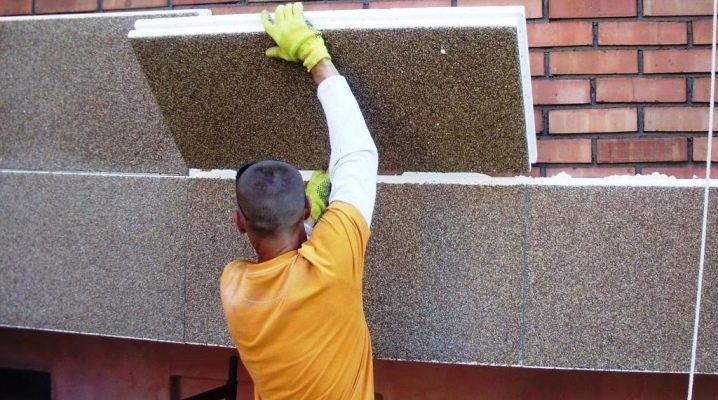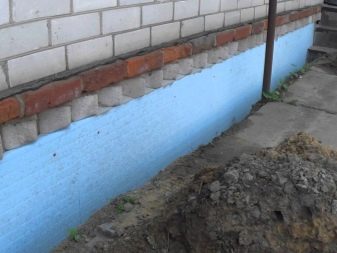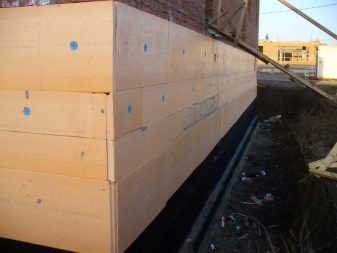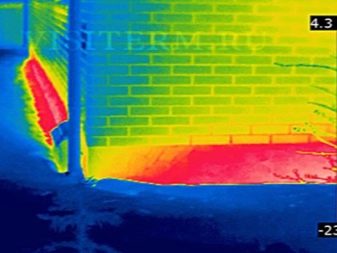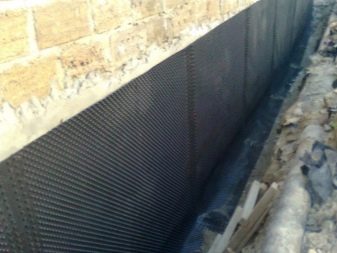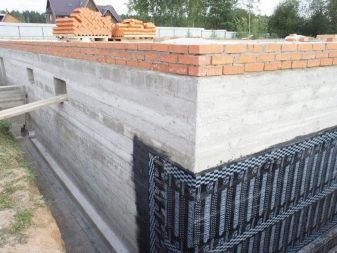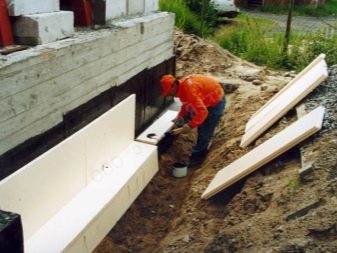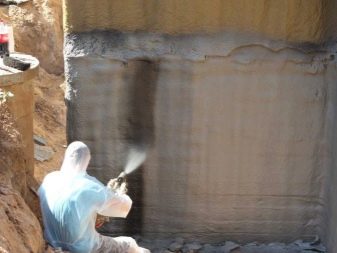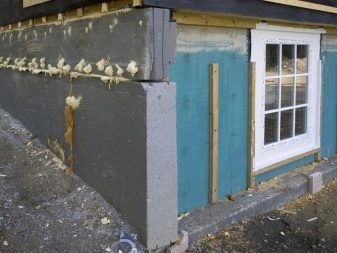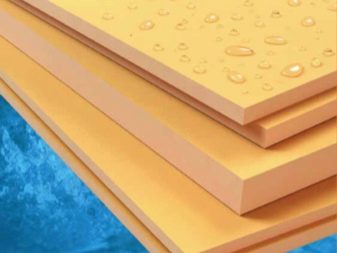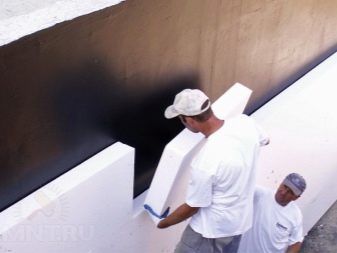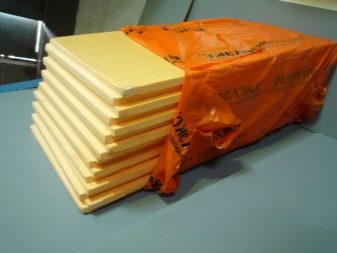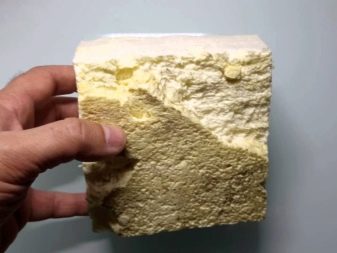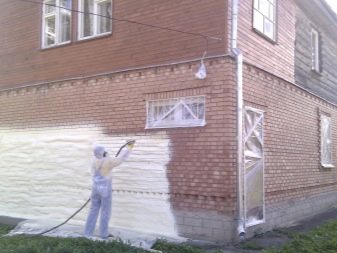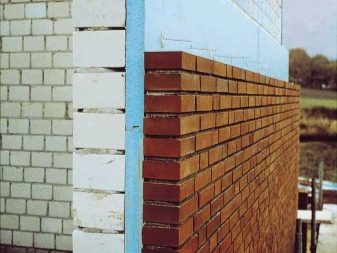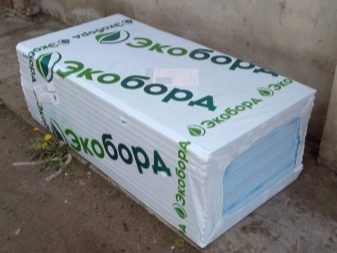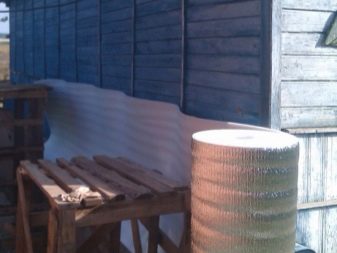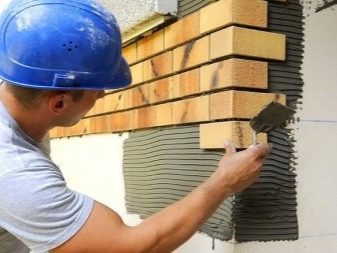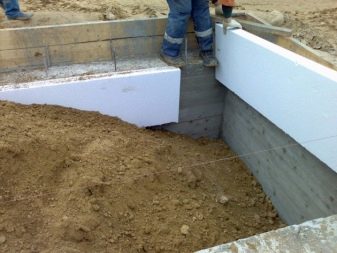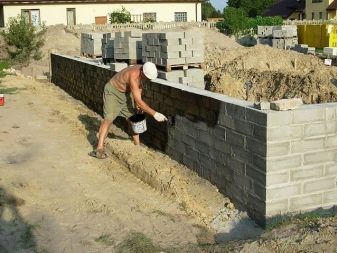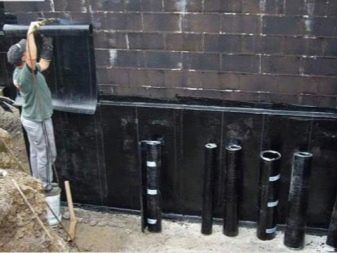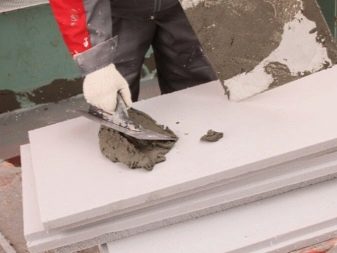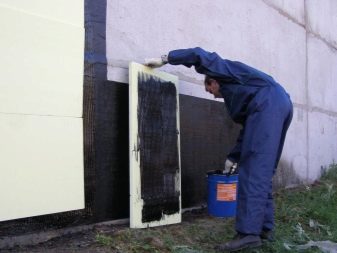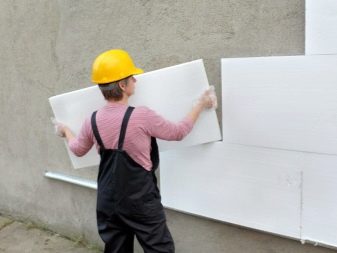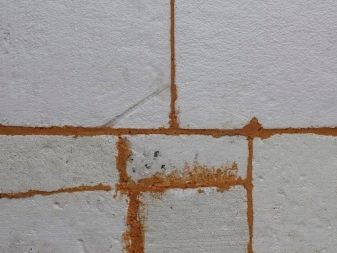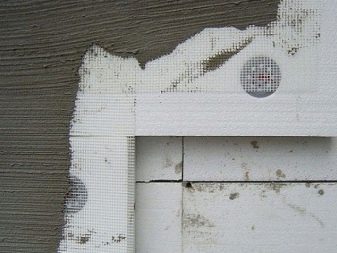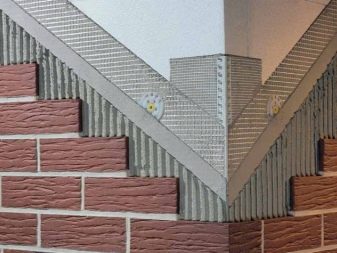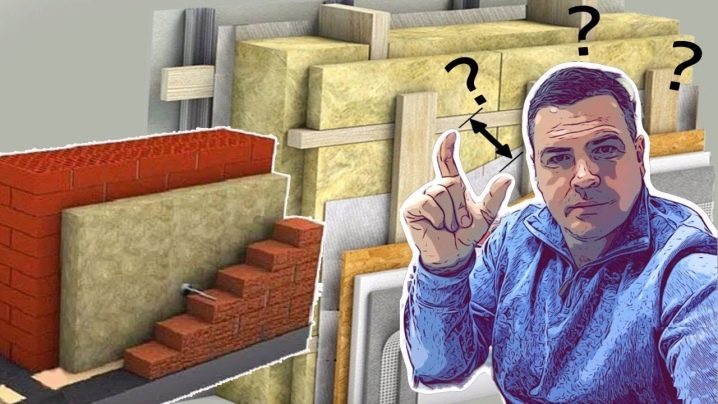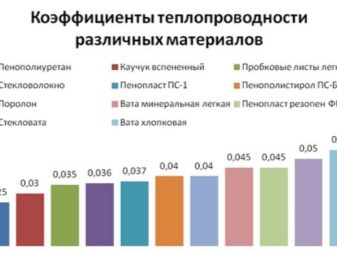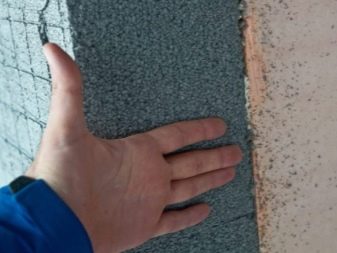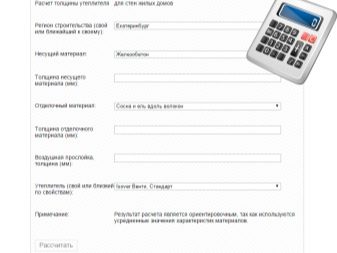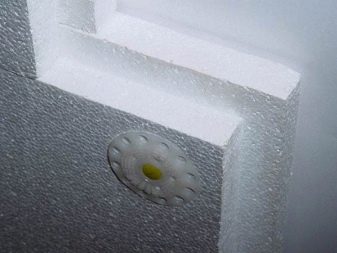Subtleties of the process of warming the basement plinth outside
Thermal insulation of the basement of the foundation is subjected to significant loads - mechanical and temperature effects, the influence of moisture. This determines the criteria for the selection of insulation and features of its installation.
Special features
A common misconception is the proposition that the foundation is not adjacent to the living rooms, and therefore does not need insulation. However, this position is fundamentally wrong, and the heat insulation of the base is needed for a number of reasons.
First of all, the insulation serves to protect the foundation from frost penetration, which means it allows to preserve the operational characteristics of the structure and extend its service life. As is known, the reliability of the entire building depends on the strength of the foundation.
An important point - high-quality thermal insulation of the foundation must include not only the insulation of the outer walls of the basement, but also the blind area around the entire perimeter of the building.
An impressive reinforced concrete base without thermal insulation becomes the accumulator of cold, from which it spreads to the supporting elements. Even in the presence of a heat-insulating layer on the floor and walls of the object, powerful heat losses are detected, the source of which is precisely the foundation. At the same time, its warming allows reducing them to 20-25%.
Another important advantage of the warmed base is a significant decrease in the swelling of the soil in the winter period. This is due to the fact that the soil near the foundation simply does not have time to freeze. With proper insulation, the soil freezing zone will not reach the basement walls. This, in turn, allows you to maintain approximately the same temperature regime of the foundation throughout its height. And after all, they become the cause of the internal stresses of the reinforced concrete foundation, leading to its rapid deterioration.
As is known, any foundation has its frost resistance coefficient, on average equal to 200 freeze / thaw cycles.Of course, this is not about 200 winters of operation, since freezing and thawing of the foundation during one winter can occur a large number of times. Proper insulation does not allow the foundation to freeze through and, accordingly, allows to reduce the number of freezing and defrosting cycles of the foundation during the cold season.
In addition, the external insulation of the base allows you to move the dew point closer to the outer surfaces, so moisture will not accumulate in the thickness of the basement, causing erosion of concrete and corrosion of metal elements. Finally, the insulating layer serves as a kind of barrier to groundwater.
If we talk about the pile foundation, then it is less susceptible to the effects of intumescent soil and groundwater. However, used in this case, the reinforced concrete grillage in the absence of insulation becomes a source of cold. However, other problems typical of strip foundations become relevant for the grillage.
In addition, usually in the space between the ground and the overlap of the first floor of a private house pave vital communications, the freezing of which is unacceptable.It is the insulation of this part of the house that will ensure their uninterrupted work.
An important point: these properties can only be achieved when the basement is insulated outside.
Internal heat insulation can give a slight reduction in heat loss, however, with improper insulation, the risk of increasing humidity in the room is high. Naturally, the appearance of “cold bridges”, a decrease in the level of soil swelling and the protection of the foundation, cannot provide internal insulation.
Insulation Requirements
The basement part of the foundation to a greater extent compared with the other elements of the house is exposed to low temperatures, mechanical and chemical effects, moisture. On this basis, the heater used must first of all be characterized by the following properties:
- low thermal conductivity;
- moisture resistance;
- resistance to temperature extremes;
- high mechanical strength.
There are usually no special requirements for vapor permeability, they try to select a material whose vapor permeability indicators are close to those of the base material.
Fire hazard in this case is also not the primary characteristic, since most of the insulation will be buried under the ground, that is, be in the least fire-prone place.
To protect the insulation should immediately pick up a decorative material - plates, panels, siding. And it should be not for the facade, but for the base.
Materials
As the insulating layer is usually used extruded polystyrene plates. The material has high rates of thermal efficiency, in addition, it does not pass moisture. It should be noted, and ease of installation plates. They have the correct geometry (available in the form of rectangles), smooth surface. It is enough to glue the plates onto the previously prepared surface, avoiding the formation of gaps between them, since they will become “cold bridges”.
Among the disadvantages of the material is its ability to secrete styrene, which is not useful for humans. However, with external insulation the environmental requirements are not as strict as in the case of internal insulation. The material belongs to the fuel, it is attractive to rodents,who love to make moves in it.
Polystyrene plates can have 2 types - foam and extruded polystyrene foam. By the way, on the basis of the latter, a more modern modification of styrene insulators is made - penoplex. Insulation of the penoplex will give a better effect, in addition, the material has grooved edges, which simplifies installation and makes more reliable joining of the material.
Another effective insulation - polyurethane foam, also has a low coefficient of thermal conductivity, resistant to moisture, temperature extremes. Unlike expanded polystyrene, it is an eco-friendly and non-combustible material.
Warming polyurethane foam requires the involvement of specialists - the material is sprayed on the surface of the base, forming a powerful and warm layer.
Due to the peculiarities of the application, it is possible to achieve strong adhesion of the material to the surface, filling it with all cracks and voids. This, in turn, guarantees the absence of "cold bridges".
Both heaters (polystyrene foam and polyurethane foam) do not allow surfaces to "breathe." For concrete and reinforced concrete foundations this is not a problem,however, on wooden surfaces (for example, when using wood to fill the space between the overlap of the first floor and piles), their use is not recommended. Excess moisture will remain in the thick of the wood, which will lead to its decay.
Another important point is that both materials are not resistant to UV rays, therefore, immediately after the thermal insulation it is necessary to begin the installation of the protective and decorative basement layer. It is unacceptable to store material (foam plates or extruded varieties of it) without packaging. Otherwise, the products lose their performance.
Finally, insulation and penofol are popular. This is a roll material based on foamed polyethylene, equipped with a heat-reflecting foil layer. The foamed polyethylene itself has a low thermal conductivity, an additional increase in thermal efficiency is achieved due to the presence of the foiled layer. It can reflect up to 97% of heat. For this, it is not positioned outside, but towards the inside of the base.
The advantage of the considered heaters is their versatility - they are suitable for any type of basement (brick,concrete, reinforced concrete), may be covered with various materials for decoration (often siding, front panels).
It is not recommended to warm the basement of mineral wool, which is so popular with wall insulation. This is due to the hygroscopicity of the material - accumulating moisture, it loses its thermal efficiency.
How to warm your own hands?
Ideally, the warming of the basement should be carried out even at the stage of filling the foundation. Let us consider this process in more detail on the example of the insulation of the base of the strip base. After it is poured and solidified, demolding is performed. Next, you need to free up to the bottom of the basement surface, digging trenches along the base. Their width should be sufficient so that the descended employee is comfortable to perform the necessary manipulations.
If insulation is carried out in an already constructed house, then it is also necessary to dig trenches to the very foundation of the foundation with the help of shovels.
The next step is the preparation of the foundation base. Surfaces should be cleaned from dirt and dust, dried. Only in this case it will be possible to achieve good adhesion of them with insulation.
If on the surface there are flows of concrete and other irregularities, they should be eliminated using a grinder with a nozzle for stone and wood. Cracks and cavities should be patched with putty for concrete that has a high setting speed. When using a classic cement mortar, you will have to wait for it to set, about two weeks.
Next, a layer of polymer primer is laid on the prepared surface. It is important to apply the composition in a uniform layer, excluding skips. It is convenient to use for this a synthetic roller with a short nap, and in hard-to-reach places - a brush. Primer will improve the adhesion of waterproofing materials.
The next stage is fixation of the waterproofing layer, represented by roll materials on a bitumen-polymer base or membrane waterproofing. The choice of specific material remains for the homeowner.
Bitumen-roll materials can stick on mastic (self-adhesive products) or build-up using a gas torch. Straighten the material should be upwards. When pasting corners, it is important that the web of material covers one side and extends perpendicular to 100-150 mm.
Once completed waterproofing work, proceed directly to the insulation. For fixing polystyrene foam plates, you can buy ready-made glue for thermal insulation works. Its advantage is a good indicator of adhesion on vertical surfaces.
If you need a more economical option, purchased dry mix mortar. Another variant of the adhesive base is the use of bitumen mastic. It is suitable if the insulation is glued to the roofing material. However, it is important that the mastic contains no organic solvents, since they destroy the polystyrene foam plates. It is necessary to choose the composition most suitable for this type of work on a water-soluble basis.
Next, the glue is applied to the entire surface of the insulation board with a notched trowel. It is necessary to adjust the amount of glue so that its excess does not protrude beyond the plate when gluing. If this happens, remove the glue immediately.
The work is also performed from the bottom up, the plates are pressed against the foundation, and after setting, you can proceed to fixing the next one.If necessary, a two-layer insulation layer, the second row of plates is mounted in such a way as to avoid overlapping seams. That is, the second row is laid out with an offset from the first.
Fastening of heat-insulating material below the ground level should be carried out only on the adhesive composition. Above the level it is recommended, in addition to glue, to use additional fixation with dowels - fungi. It is important that the dowels are first drilled holes of a suitable diameter, which are already inserted dowels. Otherwise, the cracking of the material for the most part of the plate cannot be avoided, which becomes a decrease in its thermal insulation characteristics.
When detecting joints, fill them with construction foam. It is better to choose the composition, released by the same brand as the insulation.
After hardening of the foam, its excess is cut off with a knife.
In fact, the insulation can be considered complete, but it will be right to protect the foundation from the chemical influence of groundwater. To this end, fiberglass mesh is stretched around the entire perimeter of the foundation, on top of which a plaster is applied with a thin layer using a coating for waterproofing.You can also use a special membrane. Only after carrying out these manipulations need to proceed to backfilling the base.
The towering basement part of the foundation remains to be protected with a special decorative material. As a rule - it is wall panels, siding. Contact treatment with plaster or paint composition is possible. To do this, the insulation is reinforced, covered with plaster in 2-3 layers, the finishing layer of which is carefully polished. After that you can apply a decorative layer.
Tips
For proper insulation you need to choose the optimal thickness of insulation. Too thin a layer does not cope with its functions; an excessively thick layer will cause unnecessarily increased loads on the foundation and financial costs.
To calculate the thickness of the insulation should use the formula Rsum = hf / λf + hy / λy, where R sum is an indicator of the total resistance to heat transfer, which should be characterized by the foundation. The unit of measurement is m² × ° K / W.
This indicator is a constant construction value and is developed for each region taking into account climatic conditions.You can get acquainted with a specific value in the SNiP or by contacting local construction and design organizations.
The regulatory documents indicate 3 values of thermal resistance - for walls, coatings and floors. When calculating the thickness of the insulation for the basement should focus on the first indicator - for the walls.
- hф - the value of the thickness of the basement (in meters);
- λф - coefficient of thermal conductivity of the material from which the foundation is made, the latter is also a constant tabular value;
- Hu and λу - similar indicators for insulation.
The coefficient of thermal conductivity can be found by studying the instructions attached to the heater or by using data from the Internet (the first method will be more accurate).
Knowing this parameter, it is possible by mathematical solutions to calculate the required thickness of insulation.
In addition to independent calculations, you can ask for help from professionals or use special online calculators. They are usually placed on the official websites of large manufacturers of heaters. In the windows of the calculator, it is enough to select the region of the building (or indicate the indicator of the total heat transfer resistance),choose the required thickness of the foundation and its type, the material of the base and the type of insulation used.
If necessary, calculate the thickness of the insulation layer for the pile foundation in such calculators usually need to put "0" in the column about the thickness of the foundation.
The result is in millimeters. When receiving fractional numbers, you should round them up to integers and convert them to centimeters.
Choosing polystyrene foam plates for plate or strongly buried tape bases, preference should be given to marking products PSB-S-50. They withstand high mechanical loads, which allows to curb the swelling of the soil. Plates of the brand PSB-S-35 are suitable for insulating columnar and shallow-depth strip foundations.
How to warm the foundation of the house with your own hands, see the following video.
